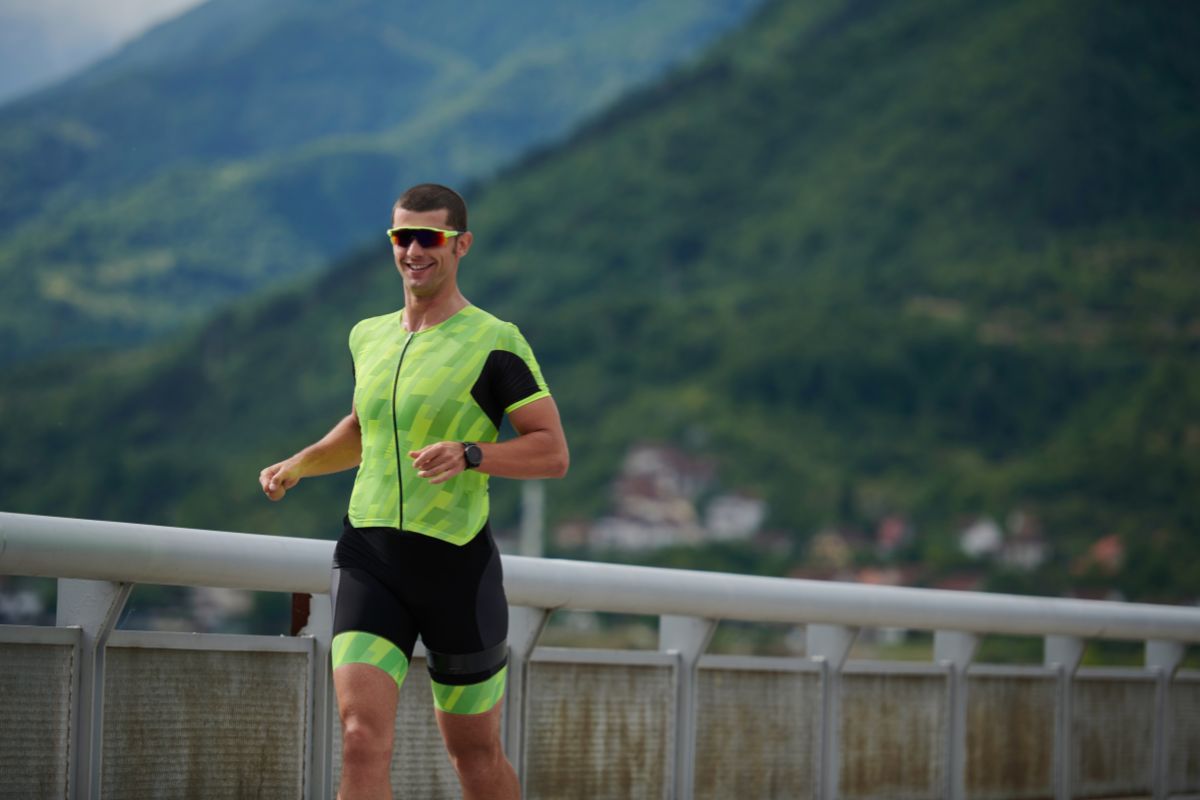If there’s one thing runners can learn from cyclists, it’s to wear sunglasses. Wearing sunglasses for running is not only cooler, but it also hides the painful, lousy look on your face on the back end of a long run, and of course, the main purpose is to protect yourself from UV rays.
Even when the sun is hidden behind clouds, UV rays can cause eye damage, so sunglasses are essential in a runner’s kit. “Don’t take it lightly and think, ‘It’s no big deal if you only run a few kilometers.'” Rapoport says, “Like skin, the effects of UV exposure are cumulative over time.”
Sunglasses act as a kind of windscreen to protect your eyes. Dello Russo says, “The cornea, the clear, protective membrane at the front of the eye, is susceptible to tiny particles getting in.
When running on a dirt road, or when the wind picks up road debris, very fine dust can erode the eye and cause an infection.” Rapoport explains. Even if it’s not serious, symptoms like dry, itchy eyes can distract you and slow down your running.
How to Pick Running Sunglasses?
First, “pick lenses that block 100 percent of UV rays,” says Dello Russo. “The words ‘UV 400’ should be on the product label.” UV rays can be divided into several types based on wavelength, two of which require extra attention: the UVA associated with skin aging, and the UVB associated with skin burns, and UV 400 protective sunglasses block both.
Also, don’t judge simply by the shade of the lens color, as darker lenses don’t mean better protection. “It’s a matter of personal preference,” says Dello Russo. Certain tints can improve contrast under certain conditions, but the color difference has no effect on UV protection, and you can even find UV 400 clear lenses on the market. Whether you prefer darker or lighter colors, it should be polarized lenses.
CheRing offers options for polarized lenses. Polarised is a coating on the top of the lens that filters out direct and reflected light. Finally, there is some truth to the saying “bigger is better”. Runners need real protective eyewear or wrap-around sunglasses,” says Dello Russo.
Most of them will have oversized lenses that wrap around the side of the face, which not only prevents UV rays from hitting the eyes but also prevents UV rays from damaging the eyelids and surrounding skin.” Like any other piece of running gear, Rapoport says, comfort is a key focus in selecting sunglasses.
“Ill-fitting sunglasses can squeeze the nose or temple area and give you a headache wearing them. They can also be distracting if they’re always sliding down the bridge of your nose.” Therefore, try to match a sunglass with adjustable nose pads to enhance comfort.
However, if you’ve ever experienced the discomfort of squinting in the hot sun for long periods, you’ll know how important they are! Wearing sunglasses while training will help you see better, which will improve your performance.
Crucially, it’s also important for your eye health. The Eye Institute recommends wearing sunglasses to protect your eyes from UV rays. Prolonged exposure can lead to several problems, including:
- Age-related macular degeneration
- Development of cataracts
- Growths on the white of the eye (pinguecula and pterygium)
- Cancer of the eyelids
However, choosing the best sunglasses for running can be tricky and some of the terms used to describe lenses can be difficult to understand. Let’s take a look at some of the features you need in running sunglasses and what these confusing descriptions mean!
Features of Running Sunglasses
Firstly, consider whether you want to use your sunglasses for running only or if you want to use them for other purposes as well. This will influence the style you choose. While some of the sunglasses in this guide will look great with your other running gear, they may look out of place in a more formal setting! Other things to consider include:
Protection from UV rays and glare
UV protection is the most important consideration and depends largely on the lenses you choose. Here’s what you can expect from each variety: Polarised lenses – reduce glare and any reflections from water or snow. Even the cheapest sunglasses may come with polarized lenses and often offer UV protection as well.
Photochromic lenses – these are ideal, appearing clear in very cloudy conditions and deepening in color in bright sunlight. Choose these if you like to run at different times of the day. Standard lenses – these are non-polarized and non-photo-color changing.
Hydrophobic lenses – these have a coating that prevents them from fogging up when it’s cold and prevents condensation from forming when you sweat. Interchangeable lenses – these are alternatives to photochromic lenses and allow you to switch styles to suit different light conditions.
Shape and fit
Ideally, choose glasses that fit your face shape so that they block the sun’s rays from as many directions as possible. They should rest comfortably on the bridge of your nose, preferably with a rubber nose rest to prevent them from sliding.
The arms should hold them firmly in place, but not too tightly. Too much pressure on the sides of your head can become very uncomfortable in the long run.
Cost
While our guide contains some affordable options, the best running sunglasses can be very expensive. Expect to pay more for very high-quality, durable lenses that stand the test of time.












